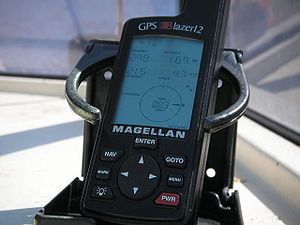The GPS for a website and any brand’s online effort is Google Analytics. If you have a website and don’t regularly review analytics, it’s the same as getting into a car to drive someplace without knowing where you’re going. When Google Analytics was released in 2005, it was a watershed event for any brand doing business on the internet. Google made available sophisticated analytic software for free. It changed the reason to build a website from “because every business has to have a website” to one where a website can be used to create business and be proven to generate even more.

Although Google Analytics is an invaluable guide, it can be an overwhelming amount of data. And less may be more. How do you navigate Google Analytics. What are the measurements that matter? Here are the 9 Google Analytic metrics every marketer should know.
- UNIQUE VISITORS: A count of how many different people come to your website within a specified period of time, usually 30 days. Google Analytics software distinguishes from cookies visitors who only visit the site for the first time is a specified period versus who return to the site. Every business relies on awareness to drive business growth. If unique visitors are not moving in a positive direction, most likely your business isn’t, either.
- SEGMENTATION: Not all visitors are equal and, for every business, there a wide disparity between best and worst customers. Once you know how many visitors come to your site, it’s time to focus on the ones with the highest value. Does your business have a geographic skew? Do people who visit 3 or more times tend to make a purchase? If you invest in media, do you want to know which ones give you the most visitors and sales? Segmentation can be easily viewed within Google Analytics on the dimension most important to your business or set up with their Advanced Segments feature.
- BOUNCE RATE: ” Bounce Rate” is the percentage of people who view only one page of your website. It is a measure of site’s relevance. Lower is always better For example, if your bounce rate is 35%, then 65% of people view more pages. A good bounce rate depends on your business objective and what your bounce rate is now. It is a primary metric because every business should have a site that as relevant to its viewesr as possible.
- TRAFFIC SOURCES: Viewers come from 3 “Traffic Sources”: 1) Search, 2) Referral (e.g. social networks, email, other sites) and 3) Direct. Once you know the percentage from each, you have the blueprint you need to create your marketing or outreach effort so get the greatest value and return for the time and/or money you invest.
- KEYWORDS: Viewers come to your site because they have an unmet need. This is expressed through the “Keywords” on your Google Analytics dashboard. This is also viewed in the “Traffic Sources” section. If people know your brand, it’s advisable if traffic comes from keywords that have your brand name but also the category or industry you compete. This is the unmet need new customers want to have met and indicates people who know and want to know you visit your site.
- CONTENT: What pages are viewed most often? Are your viewers taking the journey you want? This is answered by looking at “Content” to see the pages viewed in rank order. If your “Bounce Rate” is not where you think it should be, the result from your “Keywords” and “Content” give the greatest insight to putting you on the right path.
- CONVERSION: What is the action you want visitors to take from your website? This is the fundamental question for every business online. It can be answered in the “Conversion” section. Do you want them to buy your product from the site? Or download a video, or eBook or White Paper? Sign up for your email or subscribe to your blog? These are examples of “Conversion” which is the action you want consumers to take when they visit your website.
- AVERAGE VALUE: If you sell a product or service on your website, these last two metrics are for you. “Average Value” or “Average Shopper Value” or “Average Order Value” is the best measurement to watch and take action to positively effect sales. Do customer buy one or two products when they buy? Or two or three? When you know “Average Shopper Value,” you can put a plan in place that works to your and your customers advantage and see the effect almost instantly
- ABANDONMENT RATE: It is the percent of people who intended to buy, by clicking on the add to cart button, and make an order. “Abandonment Rate” can vary bu usually is between 50 to 70%. If “Conversion” and “Average Shopper Value” is not where you think it should be, “Abandonment Rate” is one of the first places to look for the culprit and the solution.
The point of this post is to prove with just 9 or less Google Analytics, you can have a road map for your business if you look at it regularly and take the appropriate actions.
Or, as Laurence Peter says, “If you don’t know where you’re going, you’ll probably end up someplace else.”
Was this guide for Google Analytics helpful? Would you like to see more posts about how to use Google Analytics in the future?





